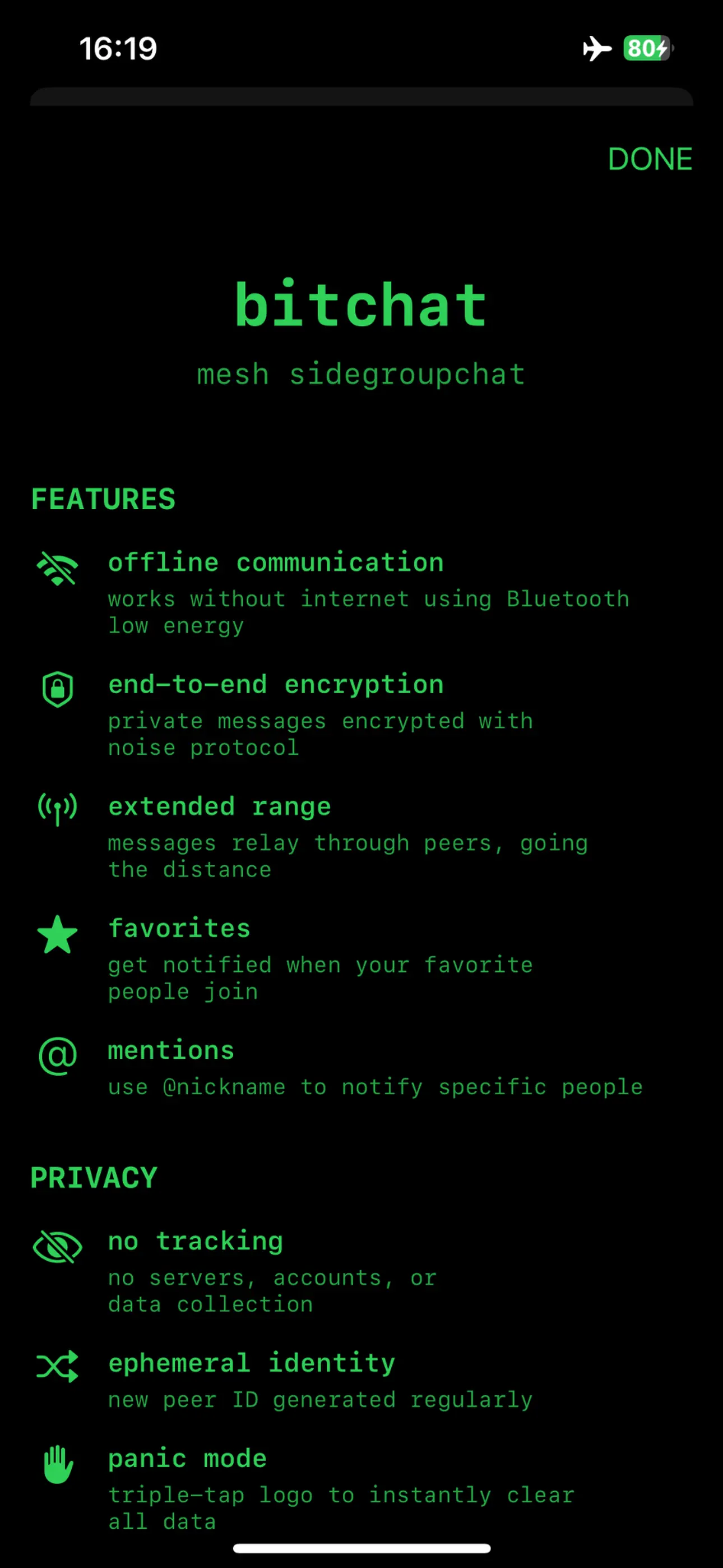Bitchat Mesh: Offline Bluetooth Chat App Analysis
by Jack Dorsey
Bitchat Mesh enables proximity-based messaging without internet connectivity using Bluetooth mesh networking. The app targets event attendees and local communities seeking internet-independent, private communication through encrypted message relaying.
Detailed Review
Bitchat Mesh represents an innovative approach to local communication by leveraging Bluetooth mesh networking technology to create internet-independent chat networks. Developed by Jack Dorsey's team, the app positions itself as a solution for scenarios where traditional connectivity is unavailable, unreliable, or undesirable, filling a niche in the crowded messaging app market through its unique offline capability.
The core functionality centers around Bluetooth-powered mesh networking that allows messages to hop between devices within approximately 100-meter ranges. Each message undergoes end-to-end encryption before transmission, ensuring privacy despite the public nature of the mesh network. The app's relay system enables messages to travel beyond direct Bluetooth range by passing through intermediate devices, creating an ad-hoc network that can theoretically cover large areas with sufficient device density. Registration requires neither phone numbers nor email addresses, preserving user anonymity while maintaining conversational context through persistent chat rooms.
User experience revolves around a minimalist interface featuring proximity-based chat rooms that automatically populate with nearby users. The interface employs color-coded indicators showing connection strength and message transmission status. Real-world testing reveals effective performance in dense environments like conferences or campuses, though performance degrades significantly in areas with sparse device distribution. Battery impact remains moderate during active use, with Bluetooth LE helping conserve power when running in background mode.
No verified user reviews are currently available for analysis, as the application remains in early adoption phase. The absence of established user feedback makes comprehensive assessment challenging, though initial technical demonstrations show promise for specific use cases where traditional connectivity proves problematic.
The application's primary strength lies in its internet-independent operation, making it valuable for emergency scenarios, remote events, or connectivity-challenged environments. However, limitations include dependency on sufficient user density for effective mesh networking, relatively short message range between individual nodes, and potential privacy concerns despite encryption. Ideal use cases include music festivals, academic campuses, protest gatherings, and disaster response situations where conventional infrastructure may be compromised or overloaded.
Key Features
- •Bluetooth mesh networking enables message transmission without internet connectivity by relaying through nearby devices
- •End-to-end encryption ensures message privacy despite the public nature of the mesh network transmission
- •Anonymous registration requires no phone number or email address, preserving user privacy and reducing barriers
- •Proximity-based chat rooms automatically connect users within Bluetooth range without manual configuration
- •Message relaying extends communication range by hopping messages through intermediate devices in the network
Why Users Love It
Internet-independent operation
Encrypted anonymous messaging
Perfect for: Event attendees and communities needing offline communication
Screenshots




App Details
Developer
Jack Dorsey
Platform
iosLast Updated
9/7/2025